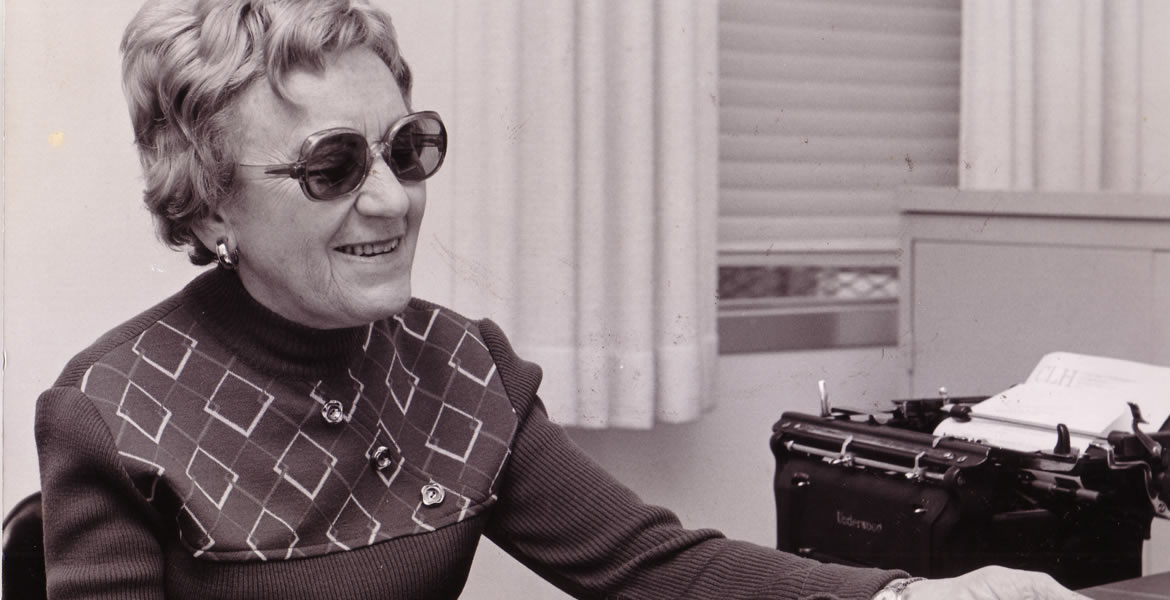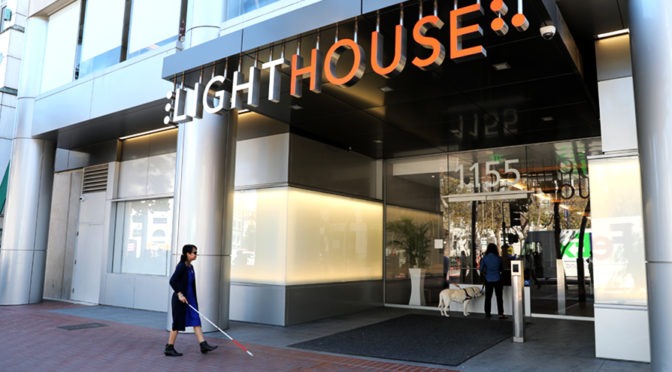In 1902, Mrs. Josephine Rowan, whose brother was blind, organized a group of women to establish The Reading Room for the Blind in the basement of the San Francisco Public Library, with the intent of helping blind and visually impaired individuals access printed material. Thus California’s first private agency for the blind was born.
In 1914, the Reading Room changed its name to the San Francisco Association for the Blind, and Ruth Quinan was hired as Superintendent of the Association. Her first action was to create the trademark “Blindcraft” for the growing production of brooms and baskets. Quinan served as Superintendent and later President of the Association until her death in 1955 – over 40 years of service. During her leadership, the Association dramatically expanded its production activities and added a cooking school to the range of services offered.
As the Association grew, the need to expand facilities emerged. In 1924, three members of the Cowell family stepped forward with the generous offer to buy land and construct the building that would house the Association’s expanding services. With the support of Isabel, Helen and S.H. Cowell, the Association moved to a new facility at 1097 Howard Street later that year. For the next two decades, the Association continued manufacturing and selling brooms, baskets and furniture produced by blind workers, and began teaching braille, instructing white cane technique and providing counseling. This made the organization quite unusual. In the 20th century blind people doing any kind of work was unheard of, and the industrial opportunities the LightHouse provided 100 years ago were considered the most progressive options then available.
In 1950, Rose Resnick and Nina Brandt founded Enchanted Hills Camp on 343 acres of land in the foothills west of Napa Valley, under the auspices of Recreation for the Blind, Inc. This organization soon after merged with The Association to become the San Francisco LightHouse for the Blind. In the sixties, the LightHouse expanded its employment opportunities to include deaf-blind individuals, and in the seventies, the agency collaborated with ophthalmologists at Pacific Presbyterian Medical Center to establish experimental services for people with low vision.
In 1977, Jewel and Jim McGinnis (who were members of Blind San Franciscans, Inc.), identified a service that was not available through any of the agencies then serving the blind and visually impaired. They founded Broadcast Services for the Blind, which offered the reading of printed materials such as newspapers, magazines and literature on the radio. In 1989, the LightHouse merged with Broadcast Services for the Blind.
Finally, in 1993, the Rose Resnick Center and the LightHouse for the Blind and Visually Impaired merged to form Rose Resnick LightHouse for the Blind and Visually Impaired, thus providing a broader continuum of services to better meet the needs of those who were blind or had low vision.
In 1996, two years after Rose Resnick LightHouse purchased 214 Van Ness in San Francisco, the LightHouse designed a comprehensive “living with Vision Loss” training program, providing rehabilitative and orientation and mobility training throughout the greater Bay Area for the first time. Today, the LightHouse provides services throughout Northern California and serves thousands of blind and visually impaired youth, adults and seniors.
As successor to many organizations, the Board of Directors streamlined the name of the organization for the new Millenium to be simply, “Lighthouse for the Blind and Visually Impaired.” Rose Resnick passed away in August 2007, just two months short of her 100th birthday, but still today we carry on her legacy and value her many years of leadership. Enchanted Hills Camp for the Blind is busier than ever, as both a summer camp, retreat center, and training facility, and every day we become more effective and relied upon for providing a seamless continuum of services and outreach into the community.
Over the last several years, LightHouse CEO Bryan Bashin has conducted a series of interviews, collecting the oral histories of significant members of the blindness community, which you can listen to at our LightHouse Podcasts page.
The Next 114 Years
In the spring of 2016, the LightHouse moved from the 1906 converted garage it occupied since 1993 into a new, state-of-the-art location in the heart of downtown San Francisco. Designed for the blind, by the blind, the new LightHouse for the Blind will triple the available space for programs and community services. The new headquarters uses innovative lighting and architectural design features to set a new standard of universal design for people with all levels of eyesight. Onsite dorms will accommodate blind people of all ages and their families from all over the US for intensive, immersive training. With this new headquarters the LightHouse’s reach and influence will grow exponentially. We’re envisioning partnering with blind, deaf-blind and other organizations across the US and the world, to house their students in our dorms and provide groundbreaking programs not offered anywhere else. Our new headquarters overlooks UN plaza and is one of the most transit-accessible blindness centers in the world.



